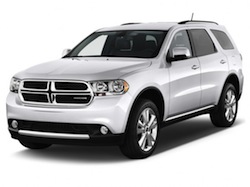 A new advanced biofuels action plan for the automotive/light duty truck sector has been released by Advanced Biofuels USA. “The Pathway to a Sustainable “Total Biomass” Advanced Ethanol Industry,” identifies six steps the cellulosic and advanced ethanol producers should take in order to build a long-term higher blend ethanol market (E30, 30 percent advanced biofuel, 70 percent petroleum). Advanced Biofuels USA believes that if ethanol can become the primary fuel for cars and light duty trucks, investors would have the confidence they need to invest in the development of the industry.
A new advanced biofuels action plan for the automotive/light duty truck sector has been released by Advanced Biofuels USA. “The Pathway to a Sustainable “Total Biomass” Advanced Ethanol Industry,” identifies six steps the cellulosic and advanced ethanol producers should take in order to build a long-term higher blend ethanol market (E30, 30 percent advanced biofuel, 70 percent petroleum). Advanced Biofuels USA believes that if ethanol can become the primary fuel for cars and light duty trucks, investors would have the confidence they need to invest in the development of the industry.
The organization has laid out six key points in a plan that if initiated, would create a steady, sustainable growth path that would lead to a long-term ethanol market, one that exceeds the requirements set out in the Renewable Fuels Standard. The plan entails a dual approach: optimized ethanol vehicles and installation of blender pumps. The key points of this action plan include:
- 1. The advanced ethanol community must adopt a long term plan to greatly increase the number of North American cars and light duty trucks that can run on E30 and higher ethanol mixtures while achieving parity mileage with current gasoline.
- 2. The advanced ethanol community must have the patience to stick with this long term plane even if the results are, at first, slow.
- 3. To build a long term high (30% and higher) blend ethanol market, the ethanol community should make clear the benefits of ethanol as a very good primary fuel, not just as an additive.
- 4. Ethanol producers must work closely with motor vehicle manufacturers and governments, both state and federal, as “First Adopters” to bring “Optimized Flex-Fuel Vehicles” to market.
- 5. In conjunction with government fleets buying optimized E30 vehicles, those fleets (and nearby fuel stations) should also begin replacing aging pumps with blender pumps to fuel all vehicles with blends ranging from E10 to E85.
- 6. As the number of these optimized FFVs and new tech E30+ vehicles increase, the advanced ethanol community should identify where concentrations of those vehicle are located and work with stations and governments in those areas to get more blender pumps installed.

